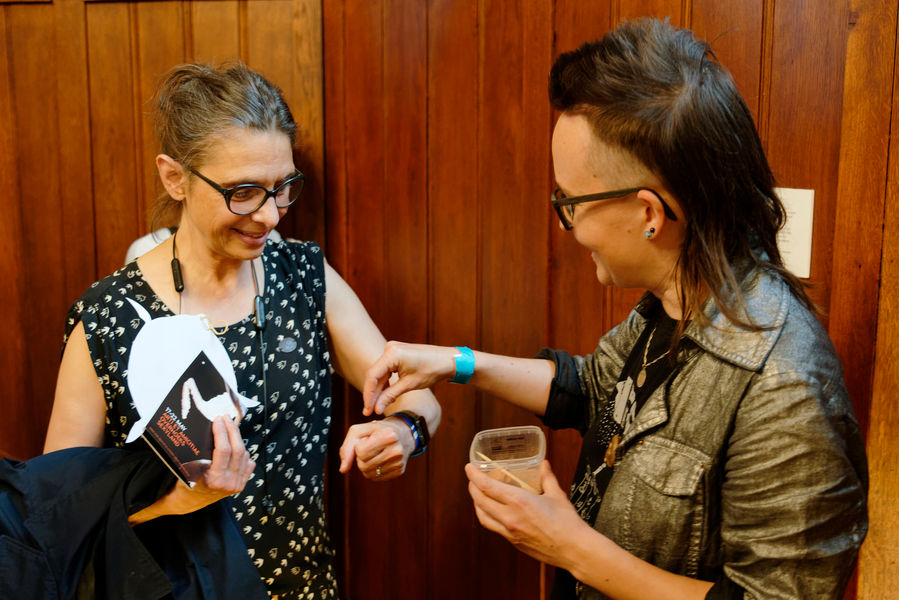masharu
Museum of Edible Earth
A recurrent and very important theme throughout the artistic practice of masharu is geophagy and the act of eating earth and soil-like substances. In a number of countries all over the world, soil eating is a common cultural, spiritual or healing tradition, while in Europe and the USA, it is officially regarded as a psychological disorder known as pica. This difference of attitudes exemplifies the gap between cultures; and in masharu’s installations and participatory sessions using edible ceramics and earth samples, this issue is sometimes addressed. The act of eating earth and soil-like substances in their work symbolises the meeting of the instinct with socially accepted behaviour and is connected to culture, spirituality, addictions and sexuality. In their work the prohibited becomes casual.
masharu is showing an installation, serving an earth cocktail in Arti and organising an earth eating ritual in Amsterdam North.
In XV-XVIII centuries gallows were standing on the site of the Overhoeks tower. Their bodies were displayed on stakes as gruesome examples to the living. They were a warning to the residents of Amsterdam and to the sailors on the IJ River. Specially for FLAM #9 a selection of earth samples from the Museum of Edible Earth has been created. On Saturday 21st of May we invite you to join us in an earth circle. Through engagement with earth from various places we will give attention to the history of Overhoeks, connecting histories and urgent situations of today.
You are welcome to bring your own earth.
Circle with Rose Akras, Elvira Semmoh, Alevtina and masharu.
Bio
masharu is a creative with a background in science. In 2011 Ru obtained a PhD in Mathematics and graduated with honours from the Photo Academy Amsterdam. In 2013-2014 they participated in the artist-in-residency programme at Rijksakademie van Beeldende Kunst in Amsterdam. In 2018 masharu was an artist fellow at the Netherlands Institute for Advanced Study in the Humanities and Social Sciences (NIAS-KNAW). Their work has been shown in venues and events such as Word Soli Museum in Wageningen, Ars Electronica Center in Linz, Modern Art Museum in Yerevan, African Artists’ Foundation in Lagos, Spanish Cultural Centre in Guatemala City, World Design Event in Eindhoven, ReadyTex Gallery in Paramaribo, 4th Jakarta Contemporary Ceramics Biennale in Jakarta, European Ceramic Workcentre in Oisterwijk, Sustainica in Dusseldorf and Museo Maritimo in Bilbao.












